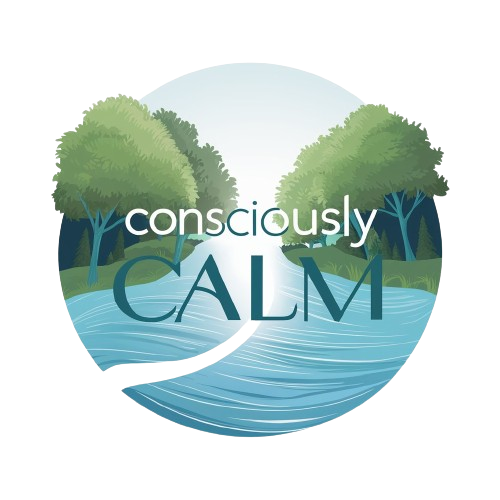Unlock Inner Peace with These 10 Journaling Prompts

Inner peace means finding a state of calm and tranquility within oneself. Journaling serves as a powerful tool to achieve this serenity. Writing down thoughts and feelings helps release pent-up emotions, reducing stress and promoting mental well-being. Using specific journaling prompts for inner peace can guide self-reflection and emotional awareness. Studies show that journaling improves mental health and reduces symptoms of chronic diseases like asthma and arthritis. Embrace these prompts to unlock a peaceful mind and a healthier life.
Journaling Prompts for Inner Peace

Understanding Inner Peace
Definition and Importance
Inner peace refers to a state of mental and emotional calmness. This tranquility remains despite external stressors. Achieving inner peace involves self-acceptance and mindfulness. Inner peace fosters overall well-being and happiness. Many people find that inner peace enhances their ability to handle life's challenges.
Common Barriers to Inner Peace
Several barriers can hinder the journey to inner peace. Negative thoughts often disrupt mental tranquility. Stress from daily life can also create obstacles. Unresolved emotions may prevent a calm mind. Identifying these barriers is crucial for overcoming them.
How Journaling Helps
Emotional Release
Journaling provides a safe space for emotional release. Writing down feelings helps to process and understand them. This practice reduces the burden of pent-up emotions. Many people experience relief after expressing their thoughts on paper.
"Journaling has been quite therapeutic for me," shared an individual who found solace in writing during a high-risk pregnancy. This personal account highlights the power of journaling for emotional release.
Self-Reflection and Awareness
Journaling encourages self-reflection and awareness. Reflecting on experiences helps to gain insights into one's behavior. This practice promotes personal growth and self-improvement. Many people discover new aspects of themselves through journaling.
"Journaling helps me navigate my thoughts, emotions, and experiences," said a contributor who uses journaling for self-reflection. This statement underscores the value of journaling for self-awareness.
Stress Reduction
Journaling serves as an effective tool for stress reduction. Writing about stressful events can help to manage anxiety. This practice allows individuals to explore solutions to their problems. Many people find that journaling brings a sense of calm and clarity.
"Journaling can be a place of refuge for finding inner peace," reflected another individual. This insight emphasizes the role of journaling in reducing stress and promoting inner peace.
10 Journaling Prompts to Unlock Inner Peace

Journaling Prompts for Inner Peace: Gratitude List
Why Gratitude Matters
Gratitude shifts focus from what is lacking to what is abundant. This practice enhances positivity and well-being. Dr. Robert Emmons, a leading researcher in positive psychology, has shown that gratitude increases happiness. People who regularly note what they feel grateful for experience higher levels of joy. Gratitude helps to reframe negative thoughts into positive ones. This shift promotes inner peace.
"Study participants who regularly drew their attention to aspects of their lives that made them feel blessed increased their positivity," noted researcher Fredrickson.
How to Create a Gratitude List
Creating a gratitude list involves simple steps. Start by finding a quiet space. Reflect on moments or things that bring joy. Write down at least three items. These can be small or significant. Consistency is key. Make this a daily habit. Over time, the list will grow. This practice will cultivate a mindset of appreciation.
Journaling Prompts for Inner Peace: Daily Affirmations
The Power of Positive Affirmations
Positive affirmations reinforce self-belief. Repeating affirmations can rewire the brain. This practice builds confidence and reduces stress. Affirmations help to combat negative thoughts. They promote a positive outlook on life. This shift leads to greater inner peace.
"Gratitude journaling is just about starting with one or a few things you’re grateful for in your life (could be anything, small or big)," shared a public health specialist.
Examples of Affirmations
Here are some examples of affirmations:
"I am worthy of love and respect."
"I choose to focus on the positive."
"I am capable of achieving my goals."
"I embrace peace and tranquility."
Write these affirmations daily. Repeat them aloud. Feel the positive energy they bring.
Journaling Prompts for Inner Peace: Reflect on a Positive Experience
Benefits of Positive Reflection
Reflecting on positive experiences boosts mood. This practice helps to relive joyful moments. Positive reflection fosters gratitude. It strengthens emotional resilience. This habit promotes a sense of fulfillment and peace.
"Robert Emmons has led positive psychology’s expansion of research on the importance of gratitude," highlighting how gratitude can enhance well-being.
How to Reflect Effectively
To reflect effectively, follow these steps. Choose a positive experience. Recall the details vividly. Write about the emotions felt during that moment. Describe why this experience was meaningful. Reflect on the lessons learned. This practice will deepen appreciation for life's blessings.
Journaling Prompts for Inner Peace: Set Intentions for the Day
Importance of Setting Intentions
Setting intentions each day can transform your mindset. Intentions guide your actions and focus your energy. This practice fosters a sense of purpose and direction. Many people find that setting intentions helps to align their daily activities with their core values. Dr. Robert Emmons, a positive psychology researcher, emphasizes that intentional living enhances well-being. Intentions create a roadmap for your day, promoting inner peace and clarity.
Steps to Set Daily Intentions
Follow these steps to set daily intentions:
Find a Quiet Space: Choose a calm environment to reflect.
Reflect on Your Goals: Think about what you want to achieve today.
Write Down Your Intentions: Clearly state your intentions in your journal.
Visualize Success: Imagine yourself fulfilling these intentions.
Review and Adjust: At the end of the day, review your progress and adjust as needed.
Consistency in this practice will cultivate a focused and peaceful mind.
Journaling Prompts for Inner Peace: Explore Your Emotions
Understanding Emotional Triggers
Understanding emotional triggers is crucial for inner peace. Emotional triggers are events or situations that provoke strong emotional reactions. Identifying these triggers helps to manage your responses. Journaling provides a safe space to explore these emotions. Reflecting on your triggers can reveal patterns and underlying causes. This awareness promotes emotional resilience and stability.
Techniques for Emotional Exploration
Use these techniques to explore your emotions:
Describe the Trigger: Write about the event that triggered your emotion.
Identify the Emotion: Name the emotion you felt.
Explore the Cause: Reflect on why this event triggered such a response.
Express Your Feelings: Write freely about how you feel.
Seek Solutions: Consider ways to manage or avoid these triggers in the future.
These steps will help you gain control over your emotions and foster inner peace.
Journaling Prompts for Inner Peace: Write a Letter to Yourself
Purpose of Self-Communication
Writing a letter to yourself serves as a powerful tool for self-communication. This practice allows you to express thoughts and feelings that may be difficult to verbalize. Writing to yourself can provide clarity and insight into your inner world. Many people find this practice therapeutic and enlightening. Self-communication through journaling promotes self-awareness and personal growth.
Tips for Writing to Yourself
Here are some tips for writing a letter to yourself:
Choose a Comfortable Setting: Find a quiet place where you feel at ease.
Start with a Greeting: Address yourself warmly.
Express Your Thoughts: Write about your current feelings and experiences.
Offer Encouragement: Provide yourself with words of support and motivation.
Reflect on Your Journey: Consider your progress and future aspirations.
Regularly writing letters to yourself can deepen your understanding and appreciation of your journey.
Journaling Prompts for Inner Peace: Visualize Your Ideal Day
Benefits of Visualization
Visualization helps create a mental image of your ideal day. This practice can boost motivation and focus. Imagining a perfect day can reduce stress and anxiety. Visualization can also enhance problem-solving skills. Many people find that this technique promotes a positive mindset. Dr. Robert Emmons, a positive psychology researcher, emphasizes that visualization can lead to increased well-being.
"Visualization helps me see my goals clearly and stay motivated," shared an individual who practices daily visualization.
Steps to Visualize Effectively
Follow these steps to visualize your ideal day:
Find a Quiet Space: Choose a calm environment to avoid distractions.
Close Your Eyes: This helps to focus your mind.
Imagine Your Ideal Day: Picture every detail from morning to night.
Engage Your Senses: Think about what you would see, hear, smell, taste, and feel.
Write It Down: Describe your ideal day in your journal.
Consistency in visualization can help turn dreams into reality.
Journaling Prompts for Inner Peace: Reflect on Personal Growth
Tracking Progress
Tracking personal growth helps recognize achievements and areas for improvement. This practice can boost self-esteem and motivation. Reflecting on progress promotes a sense of accomplishment. Many people find that tracking growth enhances self-awareness. Dr. Michael McCullough, a psychologist, notes that reflecting on growth can increase positivity.
"Reflecting on my journey helps me appreciate how far I've come," said a contributor who tracks personal growth regularly.
Questions to Guide Reflection
Use these questions to guide your reflection:
What goals have I achieved recently?
What challenges have I overcome?
How have I grown emotionally or mentally?
What lessons have I learned?
What areas need more attention?
Answering these questions can provide valuable insights into your personal development.
Journaling Prompts for Inner Peace: Identify and Challenge Negative Thoughts
Recognizing Negative Thought Patterns
Recognizing negative thought patterns is crucial for mental well-being. Negative thoughts can disrupt inner peace and happiness. Identifying these patterns helps to manage and change them. Journaling provides a space to explore and understand these thoughts. Dr. Robert Emmons highlights that awareness of negative patterns can lead to increased positivity.
"Journaling helps me identify and challenge my negative thoughts," shared an individual who uses journaling for mental clarity.
Strategies to Challenge and Reframe
Use these strategies to challenge and reframe negative thoughts:
Identify the Thought: Write down the negative thought.
Examine the Evidence: Consider if the thought is based on facts or assumptions.
Challenge the Thought: Ask yourself if the thought is rational or helpful.
Reframe the Thought: Replace the negative thought with a positive or neutral one.
Practice Regularly: Consistency will help reinforce positive thinking.
These steps can help transform negative thoughts into empowering ones.
Journaling Prompts for Inner Peace: Plan for Self-Care
Importance of Self-Care
Self-care means prioritizing personal well-being. This practice involves activities that nurture the mind, body, and soul. Regular self-care reduces stress and enhances mental health. Dr. Robert Emmons, a positive psychology researcher, emphasizes that self-care promotes overall well-being. Many people find that self-care activities boost energy and improve mood.
Dr. Michael McCullough, a psychologist, notes that self-care practices can lead to increased positivity and resilience.
Creating a Self-Care Plan
Creating a self-care plan requires intentionality. Follow these steps to develop a personalized self-care routine:
Identify Needs: Reflect on areas of life that need attention. Consider physical, emotional, and mental needs.
Set Goals: Determine specific self-care goals. Examples include exercising regularly, meditating daily, or spending time in nature.
Choose Activities: Select activities that align with self-care goals. Options include yoga, journaling, reading, or taking a relaxing bath.
Schedule Time: Allocate time for self-care activities. Consistency is key to forming lasting habits.
Evaluate Progress: Regularly assess the effectiveness of the self-care plan. Make adjustments as needed to ensure continued growth and well-being.
Fredrickson, a researcher, found that study participants who focused on aspects of life that made them feel blessed experienced increased positivity.
A well-crafted self-care plan fosters inner peace and enhances quality of life. Embrace self-care as a vital component of daily routine.
Journaling offers numerous benefits for achieving inner peace. Writing down thoughts and feelings helps release emotions, reduce stress, and promote self-awareness. Journaling can improve mental well-being and resilience. Start using the provided prompts to begin this transformative practice. Explore additional resources like books, online courses, or journaling communities to deepen your journey. Embrace journaling as a daily habit to unlock a peaceful mind and a fulfilling life.
See Also
Achieving Self-Kindness for Personal Development
Key Meditative Practices for a Relaxing Getaway
Best Ways to Relax in 2024: Naturally Unwind and De-stress
Future of Meditation in 2025: Crafting Your Ideal Home Zen Area

